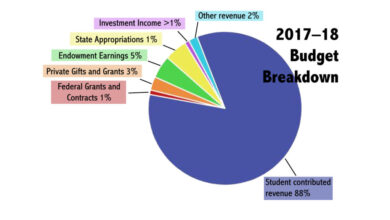File Sharing Controversy Continues to Pack Heat
File sharing controversy continues to pack heat, reigniting debates about access, copyright, and the ever-evolving digital landscape. From the early Napster days to today’s sophisticated peer-to-peer networks, the issue has sparked heated legal battles and profoundly impacted society. This exploration delves into the historical context, legal complexities, societal ramifications, and technological advancements fueling this ongoing debate.
The evolution of file-sharing platforms, from humble beginnings to the modern era, has left an indelible mark on how we access and share information. This article examines the historical context of file sharing, highlighting key moments and technologies that have shaped the landscape. We’ll also explore the complex legal and regulatory framework surrounding file sharing, analyzing differing legal approaches and the role of copyright holders.
The societal impact, public opinion, and the relationship between file sharing and the creative industries will be critically examined. The discussion will also cover technological advancements and their impact on the controversy, as well as current trends and future predictions.
Historical Context of File Sharing

File sharing, the act of exchanging digital files, has a rich history intertwined with technological advancements and societal shifts. From early rudimentary methods to sophisticated online platforms, the evolution of file sharing reflects the constant push for easier and more accessible information exchange. This evolution also highlights the ever-present tension between innovation and its potential legal and ethical ramifications.The concept of sharing information predates the digital age, but the advent of computers and the internet fundamentally altered how we share files.
Early file sharing, driven by a desire to bypass traditional distribution channels, took on diverse forms, reflecting the changing technological landscape and the unique needs of different communities. This early history is essential to understanding the complexities of the modern file sharing debate.
Early File Sharing Systems
The initial methods of file sharing were rudimentary, often limited to specific communities or networks. Early systems, often based on bulletin board systems (BBSes) and specialized networks, were characterized by slow speeds, limited storage capacity, and a reliance on physical media for file transfer. These systems were vital in allowing users to share information and software, laying the groundwork for the modern internet.
Evolution of File-Sharing Platforms
The internet’s growth fueled the development of more sophisticated file-sharing platforms. Peer-to-peer (P2P) networks emerged, allowing users to directly share files with each other, bypassing centralized servers. Napster, a pioneering P2P platform, became hugely popular for music sharing, demonstrating the potential of this technology. However, this ease of sharing also highlighted a growing tension between user convenience and intellectual property rights.
Impact on Society
The rise of file-sharing platforms had a significant impact on society. Access to information and creative content became more democratized. Users could obtain music, software, and other digital assets with greater ease. However, this ease of access also led to challenges related to copyright infringement, impacting the entertainment industry and creative professions. The development of these platforms often coincided with broader social and cultural shifts, impacting the distribution of information and the ways in which individuals and communities interact.
Differing Perspectives on File Sharing
Throughout history, different perspectives on file sharing have emerged. Advocates of file sharing often emphasized its potential to foster innovation, democratize access to information, and facilitate community building. Conversely, opponents often raised concerns about copyright infringement, the potential for misuse, and the impact on industries reliant on intellectual property. These differing viewpoints remain relevant in contemporary discussions about file sharing.
Comparison of Early and Modern File-Sharing Systems
| Feature | Early Systems | Modern Systems |
|---|---|---|
| Technology | BBSes, early P2P networks, limited bandwidth, physical media | Advanced P2P technologies, cloud storage, high-speed internet, sophisticated file encryption |
| Accessibility | Limited to specific communities or networks; often required specialized software | Broader access through diverse platforms and devices; global reach; intuitive interfaces |
| Legal Implications | Initially less regulated, but increasingly subject to legal scrutiny as copyright concerns arose | Subject to complex legal frameworks regarding copyright, intellectual property, and data privacy; significant regulatory oversight |
Early file-sharing systems had limited accessibility and often lacked robust legal frameworks, whereas modern systems provide broader access but operate under more complex legal regulations. This shift reflects evolving societal values and technological advancements.
Legal and Regulatory Landscape
The legal battles surrounding file-sharing have been a constant source of contention, shaped by evolving technological advancements and shifting societal attitudes. From the early days of Napster to the rise of peer-to-peer networks and later, cloud-based file-sharing services, the legal landscape has adapted to grapple with the challenges posed by digital distribution. This complex interplay of copyright law, technological innovation, and economic interests has profoundly influenced file-sharing practices.This section explores the legal frameworks that govern file sharing, highlighting the differing approaches taken by various jurisdictions and the crucial role played by copyright holders in these controversies.
Understanding the legal context is crucial to comprehending the ongoing debates and the future trajectory of digital distribution.
Legal Frameworks and Their Impact
Different countries have adopted varying legal frameworks to address file-sharing. Some have prioritized the rights of copyright holders, while others have emphasized the importance of access to information and user freedoms. The impact of these varying legal approaches has been significant, leading to a complex and often contradictory legal environment. For example, the US has a strong emphasis on copyright protection, while some European countries have been more inclined to consider user rights and fair use.
Copyright Holders’ Role in the Controversies
Copyright holders, particularly record labels, film studios, and publishers, have been central to the legal battles surrounding file sharing. Their primary concern has been the infringement of their intellectual property rights, leading them to pursue legal action against file-sharing platforms and individuals. The actions of copyright holders have been pivotal in shaping the legal precedents and the regulatory environment for file-sharing.
Legal Actions Against File-Sharing Platforms
The legal response to file-sharing platforms has varied significantly, encompassing a range of actions from cease-and-desist letters to lawsuits and injunctions. Understanding these actions is crucial to grasping the strategies employed by copyright holders and the resulting impacts on file-sharing services.
| Type of Action | Description | Example |
|---|---|---|
| Cease-and-Desist Letters | Formal notices demanding the cessation of infringing activities. | A music label sending a letter to a file-sharing website demanding it remove copyrighted material. |
| Lawsuits | Formal legal proceedings seeking compensation for damages or injunctions against infringing activities. | A movie studio suing individuals or file-sharing platforms for copyright infringement. |
| Injunctions | Court orders prohibiting specific actions, such as the operation of a file-sharing platform or the distribution of copyrighted material. | A court ordering a file-sharing website to shut down or remove specific files. |
| Criminal Prosecutions | Legal actions pursued under criminal law, typically targeting individuals engaging in large-scale or organized copyright infringement. | Prosecution of individuals for running illegal file-sharing networks. |
Societal Impact and Public Opinion
File sharing, a phenomenon that has deeply permeated modern society, has ignited a complex debate. Its influence extends far beyond the digital realm, impacting everything from creative industries to access to information. Understanding the multifaceted societal impact requires examining both the positive and negative effects, as well as the diverse public opinions surrounding this controversial practice.The proliferation of file-sharing technologies has significantly altered how we consume and share information.
This accessibility, while empowering in many ways, has also presented challenges to established industries and norms. The ensuing public response to file sharing has been varied, encompassing passionate advocacy and fierce opposition. Different perspectives highlight the tension between individual freedoms and the economic viability of creative industries.
Impact on Society
File sharing has profoundly impacted society in several ways. Its ease of use has democratized access to information and creative content, making it available to a wider audience. This accessibility has facilitated the spread of ideas and cultural exchange, potentially fostering a more informed and interconnected global community. However, this very accessibility has also been a source of concern, especially for industries reliant on intellectual property protection.
Public Opinion on File Sharing
Public opinion on file sharing is a complex and often contradictory landscape. Some individuals view it as a positive force for societal advancement, promoting access to information and fostering creativity. Others perceive it as a threat to intellectual property rights and the economic viability of the creative industries. This divergence of opinion highlights the inherent tension between individual freedoms and the economic interests of creative professionals.
Perspectives on Creative Industries
The creative industries, encompassing music, film, literature, and software development, have been particularly affected by file sharing. Proponents argue that file sharing can lead to increased exposure for emerging artists and greater public awareness of their work. Conversely, opponents maintain that widespread file sharing undermines the economic viability of the creative industries, potentially leading to job losses and a decrease in artistic innovation.
The financial implications for artists, producers, and distributors have been a major point of contention.
Impact on Access to Information and Creative Content
File sharing has undeniably democratized access to information and creative content. The ability to readily share and access works previously restricted by geographical limitations or financial barriers has been a significant advancement. This ease of access, however, is not without its drawbacks, as it can undermine the incentives for creators to produce new content, potentially impacting the quality and diversity of creative output.
The balance between accessibility and financial sustainability remains a key concern.
The file sharing controversy continues to be a hot topic, with debates raging on about copyright infringement and fair use. Interestingly, the rise of dual-core processors, like the Intel Pentium D, which intel pentium d takes dual core mainstream , actually highlights the evolving relationship between technology and societal norms. This, in turn, raises even more questions about how we manage digital content in the future.
The heat surrounding file sharing clearly isn’t going anywhere.
Different Viewpoints on File Sharing
| Viewpoint | Argument | Example |
|---|---|---|
| Pro-File Sharing | File sharing fosters access to information and creative content, benefiting individuals and society as a whole. | The widespread availability of music and films through file-sharing platforms allowed many to discover new artists and genres. |
| Anti-File Sharing | File sharing constitutes theft and undermines the financial viability of creative industries, potentially harming artists and creators. | The music industry has experienced significant revenue losses due to widespread unauthorized file sharing, impacting artists’ livelihoods. |
| Neutral | File sharing presents both benefits and drawbacks, requiring a nuanced understanding of its impact on various stakeholders. | While file sharing has made creative content more accessible, it has also created challenges for artists seeking to monetize their work. |
Technological Advancements and File Sharing
The digital age has profoundly reshaped the file-sharing landscape, transforming how we access, distribute, and interact with information. Technological innovations have fueled the evolution of file-sharing methods, from early peer-to-peer networks to sophisticated cloud-based platforms. This evolution has brought both remarkable opportunities and complex challenges, impacting the legal, societal, and economic spheres.The role of technology in shaping file-sharing is multifaceted.
Early file-sharing systems were often decentralized, allowing users to directly exchange files without centralized servers. This fostered a sense of community and collaboration, but also introduced vulnerabilities in terms of control and regulation. Subsequent advancements, such as the rise of cloud storage and peer-to-peer networks, have made sharing easier and more accessible. These advancements have had a significant impact on how individuals and organizations store, share, and collaborate on files.
Impact of New Technologies on File Sharing
The emergence of high-speed internet connections and sophisticated storage solutions have dramatically altered the file-sharing experience. Faster transfer speeds enable quicker downloads and uploads, making it practical to share large files, like movies and software. Cloud storage services have democratized file access, allowing users to access their files from anywhere with an internet connection. The rise of mobile devices further expanded the reach of file-sharing, making it convenient to share files on the go.
Challenges and Opportunities for File-Sharing Services
File-sharing services face a constant tension between accessibility and security. While widespread access to information is a significant advantage, the potential for misuse, including copyright infringement and the spread of malicious content, presents a significant challenge. Emerging technologies like blockchain and decentralized storage systems offer potential solutions to these issues, aiming to create more secure and transparent file-sharing platforms.
The opportunities are enormous, ranging from facilitating academic collaboration to enabling individuals to share vital documents in crisis situations.
Effect of Emerging Technologies on File-Sharing Platforms
Emerging technologies are continually transforming file-sharing platforms. Decentralized file-sharing networks, using blockchain technology, are promising approaches to enhance security and control, potentially mitigating concerns about censorship and centralized control. Artificial intelligence (AI) is also being integrated into file-sharing platforms to enhance search functionality, personalize user experiences, and potentially combat piracy. Machine learning algorithms can identify and flag potentially copyrighted material, assisting in compliance with intellectual property rights.
Advancements in Encryption and Security
Advancements in encryption technology are significantly impacting the file-sharing controversy. Robust encryption protocols ensure the confidentiality and integrity of shared files, mitigating the risk of unauthorized access. End-to-end encryption, where only the sender and receiver have access to the content, further enhances security. This evolution in encryption has implications for file-sharing platforms, requiring them to implement stronger security measures and adapt to changing technological landscapes.
Moreover, the development of quantum-resistant encryption techniques is crucial to safeguard data against future threats.
Comparison of File-Sharing Methods Across Eras
| Method | Description | Advantages | Disadvantages |
|---|---|---|---|
| Floppy Disks | Physical storage and transfer of files | Simple technology, physical ownership | Limited capacity, slow transfer speeds, physical security risks |
| Peer-to-Peer Networks (e.g., Napster) | Direct file sharing between users | Accessibility, reduced reliance on central servers | Copyright infringement concerns, security vulnerabilities, regulatory challenges |
| Cloud Storage (e.g., Dropbox, Google Drive) | Remote file storage and access via the internet | Accessibility from anywhere, large storage capacity, automatic backups | Dependence on internet connection, security concerns, potential for data breaches |
| Decentralized File Systems | File sharing without a central server, using blockchain technology | Enhanced security, transparency, reduced censorship risk | Scalability issues, technical complexity, potential for network congestion |
Current Trends and Future Predictions
The file-sharing landscape continues to evolve, driven by technological advancements and societal shifts. While the core principles of sharing files remain, the methods, motivations, and regulatory environments surrounding them are in constant flux. Understanding these current trends is crucial for anticipating the future of file-sharing and navigating the potential challenges and opportunities it presents.
The file-sharing controversy continues to generate a lot of heat, with recent events highlighting the ongoing challenges. A new eBay fraud case, for example, further underscores the growing problem of online scams and the need for robust security measures. new eBay fraud case highlights growing problem This points to a larger issue, which inevitably connects back to the complex web of file-sharing controversies and the need for better regulation.
Current State of File-Sharing Controversies
Current file-sharing controversies revolve around the tension between user convenience and copyright protection. Platforms that facilitate file-sharing, even inadvertently, face scrutiny for potential copyright infringement. The emergence of peer-to-peer (P2P) networks and cloud storage services has amplified these debates, as the ease of access to large amounts of content is countered by the difficulty in tracing and enforcing copyright laws.
Furthermore, the accessibility of content through file-sharing can sometimes clash with legal restrictions on distribution, especially for copyrighted material.
Factors Contributing to Ongoing Debates
Several factors fuel the ongoing debates surrounding file-sharing. The rapid advancement of technology, enabling ever-larger file sizes and faster transfer speeds, outpaces the evolution of legal frameworks. This creates a gap where existing regulations struggle to address the evolving realities of digital content distribution. Furthermore, varying interpretations of fair use and the balance between individual rights and intellectual property rights add complexity to the discussions.
The sheer volume of content available for sharing exacerbates the challenges of enforcement.
Predictions on the Future of File Sharing
The future of file sharing will likely be characterized by a combination of adaptation and innovation. The trend towards decentralized networks and peer-to-peer systems may continue, offering a degree of resistance to centralized control and censorship. Encrypted file-sharing platforms and blockchain technologies may become increasingly prevalent, aiming to provide greater security and control over user data. A shift towards subscription-based models, similar to streaming services, is another possibility, offering access to content in exchange for a fee.
The file-sharing controversy continues to be a hot topic, with passionate arguments on both sides. Looking ahead, advancements in technologies like quantum communication and neural networks are shaping the future of advanced communications, potentially revolutionizing how we share data. However, as these new systems emerge, the complexities of file sharing and intellectual property rights will likely remain a critical concern in the ongoing debate, and the controversy will undoubtedly persist.
the future of advanced communications is rapidly evolving, and the implications for file sharing are profound.
However, the legal landscape will continue to evolve to accommodate these advancements, with potential for new regulations aimed at balancing user rights and intellectual property protections.
Potential for New Solutions and Regulations
The development of new solutions, such as advanced watermarking technologies and sophisticated content identification systems, will likely play a crucial role in the future of file sharing. Such technologies could help identify and attribute copyrighted material more effectively, potentially minimizing unauthorized distribution. Furthermore, collaborative efforts between content creators, platform providers, and legal authorities may be necessary to establish a more nuanced approach to file-sharing, one that balances user freedoms with intellectual property rights.
The development of clear and comprehensive regulations specific to file-sharing in different jurisdictions is also essential for providing a framework to address emerging issues.
Key Trends in File Sharing, File sharing controversy continues to pack heat
| Trend | Description | Impact |
|---|---|---|
| Decentralized file sharing | Emergence of peer-to-peer (P2P) networks and blockchain-based solutions. | Increased resistance to censorship, potential for greater user control over data. |
| Encrypted file sharing | Use of encryption technologies to secure file transfer and storage. | Improved privacy and security for users, challenges for law enforcement in tracing illegal activity. |
| Subscription-based models | Shifting towards paid access to content, akin to streaming services. | Potential for revenue generation for content creators, challenges for users seeking free access. |
| Advanced content identification | Development of sophisticated tools for identifying and tracking copyrighted material. | Enhanced enforcement of copyright laws, potential for increased user privacy concerns. |
Case Studies and Examples: File Sharing Controversy Continues To Pack Heat
The file-sharing controversy has unfolded through a multitude of specific cases, each revealing unique aspects of the legal, technological, and societal challenges involved. Examining these cases offers valuable insights into the evolving landscape of digital distribution and the complex interplay between innovation, regulation, and public perception. Understanding the successes and failures of various strategies provides crucial lessons for navigating the future of digital content.The outcomes of these cases are often multifaceted, reflecting the interplay of technological advancements, legal interpretations, and societal values.
Analyzing these case studies allows us to understand the dynamic relationship between file-sharing platforms, content creators, and governing bodies, demonstrating how each element impacts the others.
Specific Cases Exemplifying the Controversy
Numerous cases have shaped the debate surrounding file sharing. Early cases, often involving peer-to-peer networks and music file sharing, laid the groundwork for future legal battles and legislative actions. These early cases highlighted the difficulties in balancing the rights of content creators with the freedoms of users.
Successful File-Sharing Strategies
Certain strategies have shown promise in managing file-sharing practices. For instance, some platforms have successfully navigated the legal landscape by implementing measures to reduce copyright infringement. These platforms have demonstrated that responsible file-sharing can coexist with content protection. Furthermore, some platforms have embraced a more collaborative approach to content creation and distribution, empowering users while upholding the rights of creators.
Unsuccessful File-Sharing Strategies
Other strategies have proven less effective, often due to the inherent challenges in regulating digital content. Many attempts to establish clear legal frameworks and enforcement mechanisms have encountered resistance from both users and content creators, demonstrating the complexities of this area.
Factors Influencing Case Outcomes
Several factors played significant roles in shaping the outcomes of these cases. The specific legal frameworks in place, the level of technological sophistication, and the degree of public support for different approaches have all contributed to the outcomes. Additionally, the varying interpretations of copyright law, coupled with the dynamic nature of technology, significantly influenced the outcomes.
Court Rulings and Legislative Actions
Court rulings and legislative actions have played a crucial role in shaping the file-sharing landscape. These actions have established precedents that continue to influence how file-sharing platforms operate and how content creators protect their rights.
Table Summarizing Key Case Studies
| Case Study | Key Points | Outcome |
|---|---|---|
| Napster (early 2000s) | Landmark case highlighting the challenges of regulating peer-to-peer file-sharing networks. The case led to the closure of the service due to copyright infringement concerns. | Napster was shut down due to legal pressure and inability to prevent copyright infringement. |
| MGM Studios v. Grokster (2005) | This case established a precedent for holding file-sharing platforms liable for copyright infringement if they intentionally facilitate such activities. | The court ruled that Grokster was liable for copyright infringement. |
| Various music industry lawsuits against individual users (2000s) | Cases against individuals downloading music files highlighted the practical difficulties in enforcing copyright in the digital age. | Many cases resulted in settlements or judgments against individuals, demonstrating the feasibility of pursuing individual users. |
Closure

In conclusion, the file sharing controversy continues to be a dynamic and multifaceted issue. The ongoing debate highlights the tension between access to information and the protection of intellectual property. As technology advances and societal perspectives evolve, the future of file sharing remains uncertain, but one thing is clear: the legal and ethical implications of this phenomenon will continue to be a subject of intense discussion and scrutiny.
The complex interplay of historical context, legal frameworks, and technological advancements underscores the need for nuanced solutions that balance access with protection.







